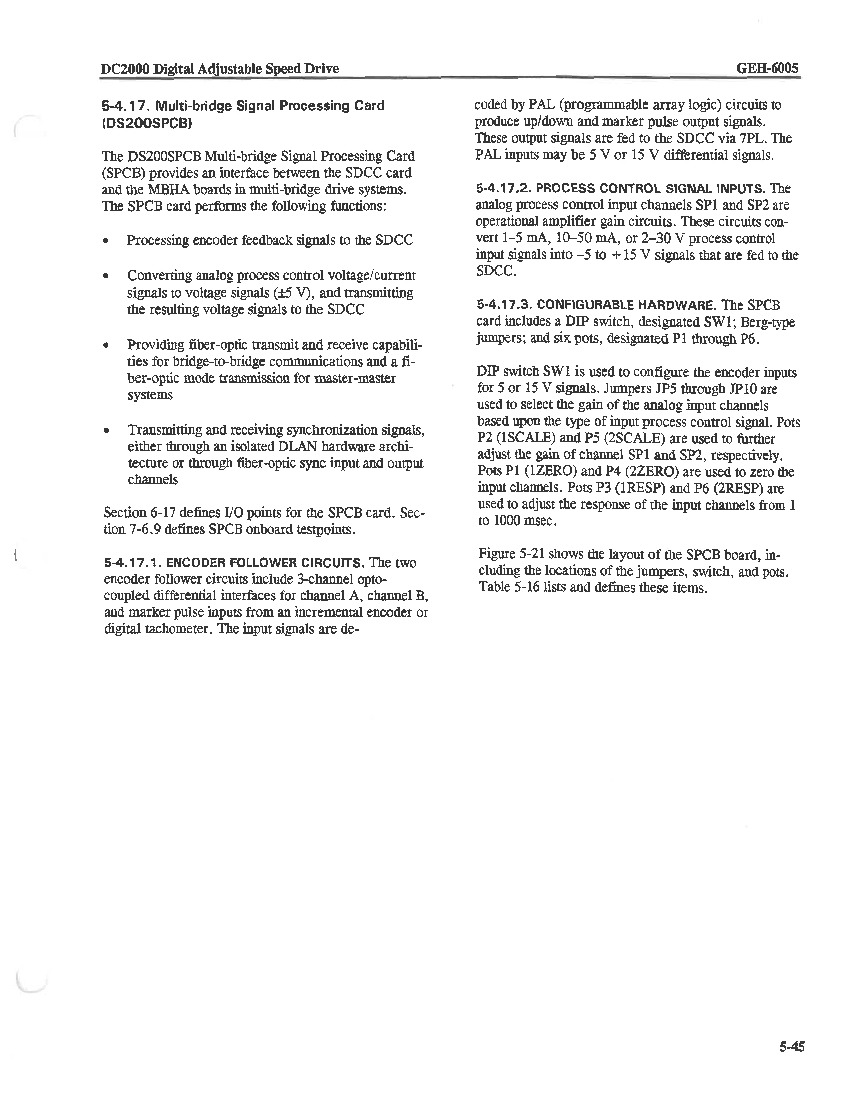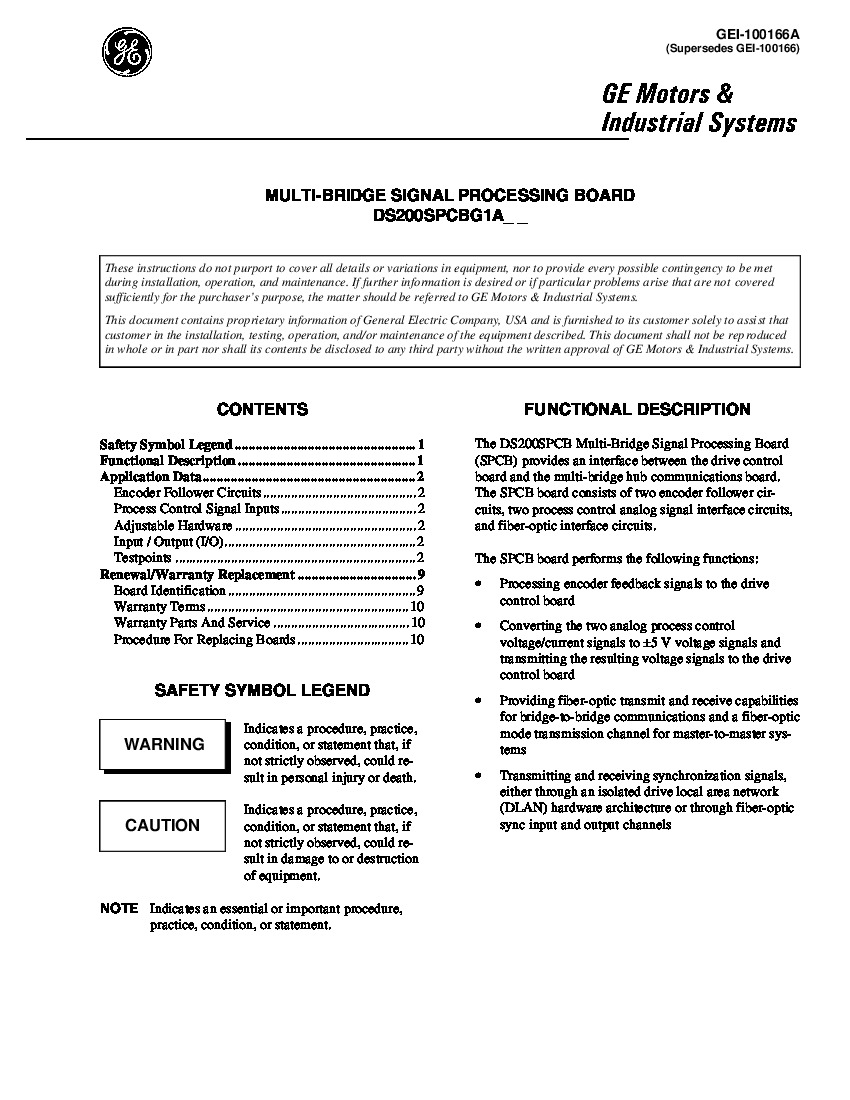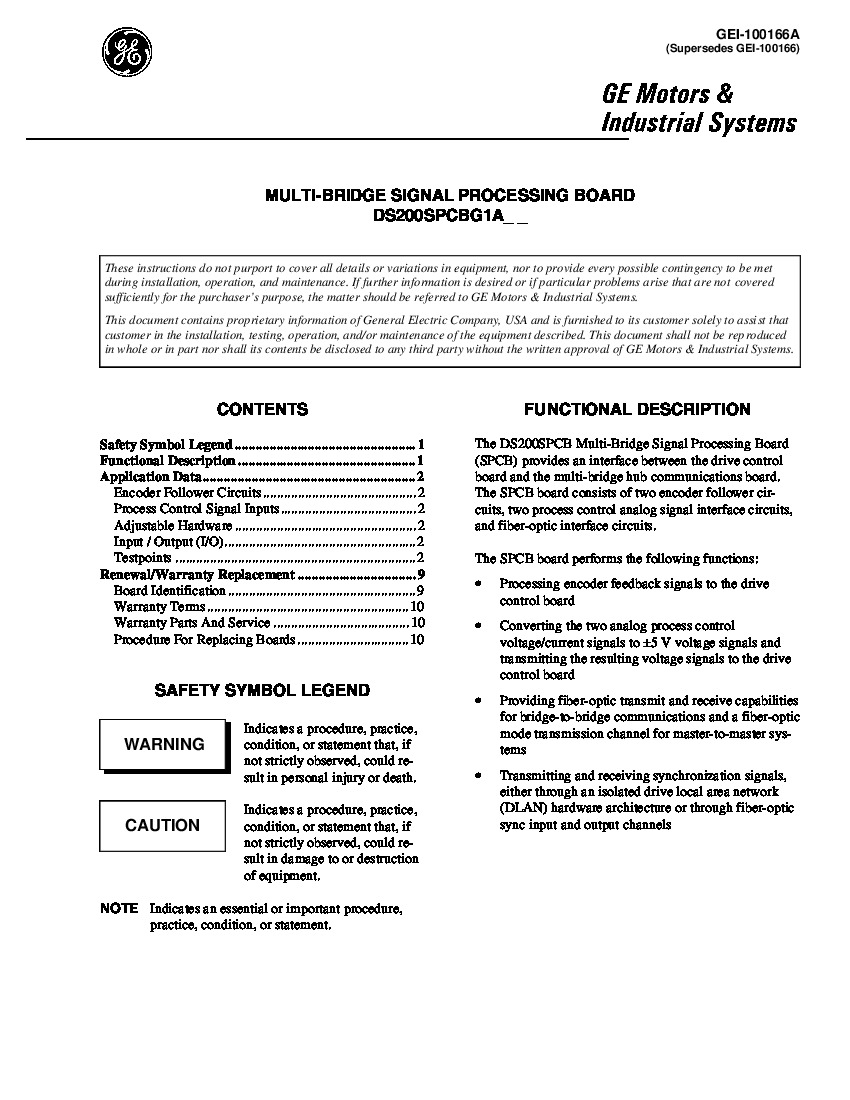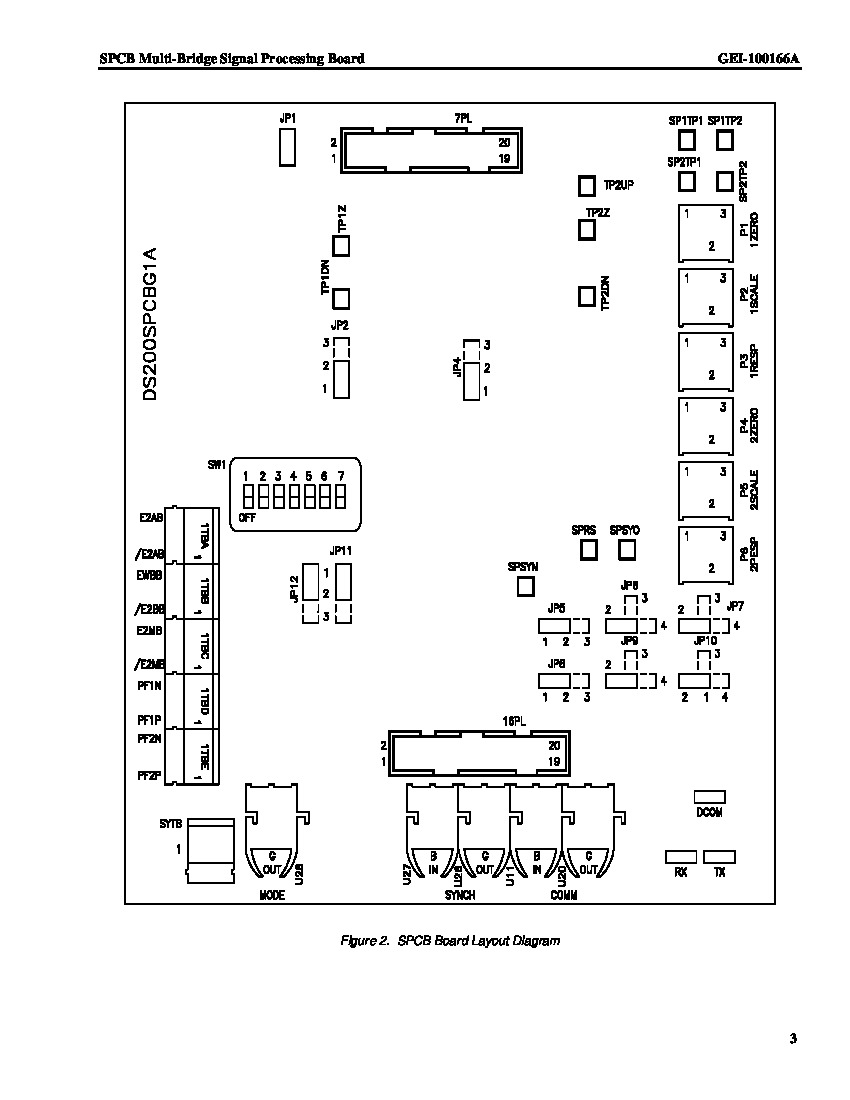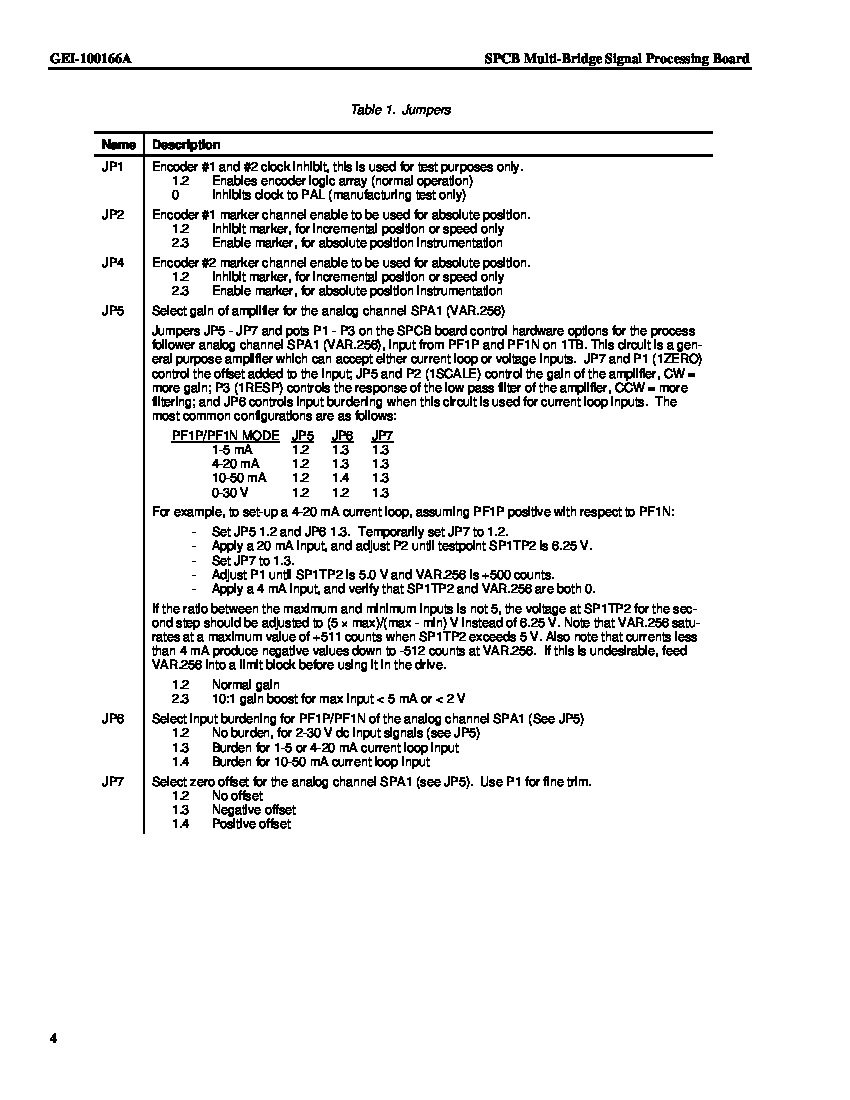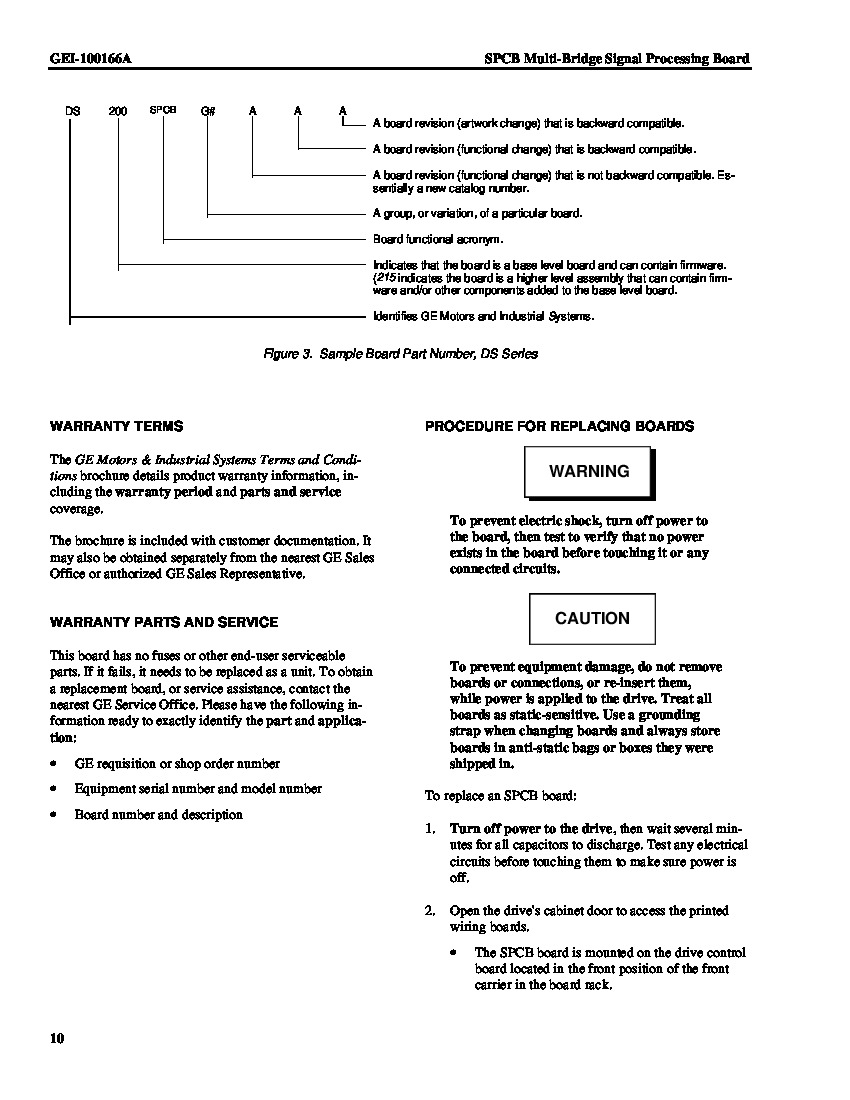❮

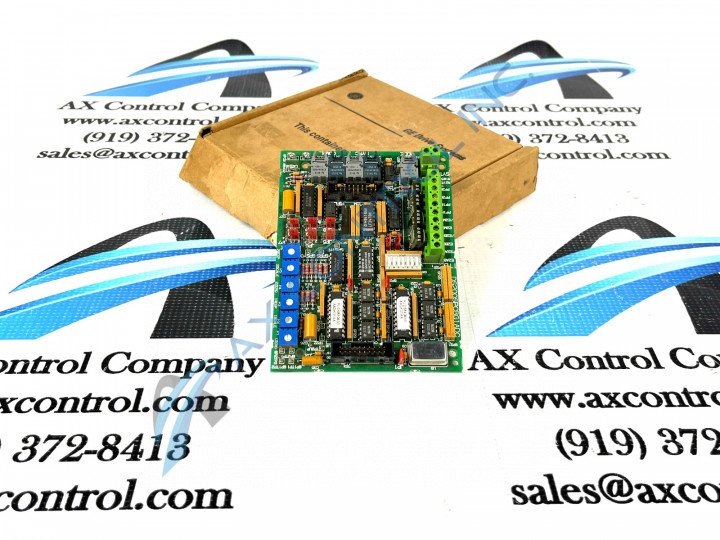
❯




DS200SPCBG1ADC
- 4.88 (17)
- Click a star to rate this product
- 4.88 (17)
- Click a star to rate this product
The DS200SPCBG1ADC Multi-Bridge Signal Processing Board was manufactured by General Electric for the Mark V Series.
AVAILABILITY:
IN STOCK
SHIPS TODAY
- Part Number: DS200SPCBG1ADC
- SKU: DS200SPCBG1ADCGBTC
- Manufacturer: GE Boards & Turbine Control
- Series: Mark V DS200
DS200SPCBG1ADC Technical Specifications
| Manufacturer | GE General Electric |
| Series | Mark V |
| Part Number | DS200SPCBG1ADC |
| Functional Description | Multi-Bridge Signal Processing Board |
| Instruction Manual | GEI-100166 |
| Functional Acronym | SPCB |
| PCB Coating | Normal Coating |
| Functional Revision 1 | A |
| Functional Revision 2 | D |
| Artwork Revision | C |
About the DS200SPCBG1ADC
This DS200SPCBG1ADC printed circuit board product offering, as discussed just above, was originally designed and produced for General Electric's Mark V Turbine Control System Series; a rather self-explanatory GE Mark product series that possesses specific applications in the control and management systems of popular and compatible wind, steam, and gas turbine automated drive assemblies. The Mark V Series that this DS200SPCBG1ADC PCB belongs to, while pertinent to some newer-developed alternative energy applications, must be considered a legacy series overall, as it was discontinued by its original manufacture due to an identified obsolescence in one of the many years past its initial release. With this being true, it is still very much considered a hot commodity on the automated industrial marketplace generally, as it exists as one of the final-developed GE Mark product series to incorporate their patented Speedtronic control system technology into many of its products.
Hardware Tips and Specifications
The GE Multi-Bridge Signal Processing Board DS200SPCBG1ADC is an interface between the drive control board and the multi-bridge hub communications board. Two functions of the board are to convert the analog process control signals to digital signals and transmit the results to the drive control board. Another function is to transmit and receive synchronization signals through the fiber optic ports. The fiber optic ports are used to transmit and receive bridge-to-bridge or master-to-master communications. Jumpers are on the board that you can use to configure the fiber optic network. There are two sets of fiber optic ports on the board for bridge-to-bridge communications. One set is for the communications and the other set is used for synchronization of the signal. In each pair one port is blue and the other port is gray. The blue port is for the receiving cable and the gray is for the transmitting cable. A fifth fiber optic port is also on the board. It is dedicated to the master-to-master communications functionality. Generally, voltage suppression and limitation in the normal Mark V Series assembly of this DS200SPCBG1ADC product offering is handled by a standard number of voltage-limiting hardware components including various styles of resistors, capacitors, and specialized integrated circuits. Over twenty pieces of customizable hardware have been made available to the normal assembly of this DS200SPCBG1ADC product offering for customization purposes.
You will find that the fibre optic network is easy to route in a manufacturing environment. The manufacturing environment is often crowded with 3-phase high-voltage cables, signal cables, network communications cables, grounding cable, and multiple other cables. And often interference occurs between cables when the signals from one electrical cable creates noise that disturbs another signal. Fiber optic cables cannot be interfered with through electrical signals. This means that fiber optic cables can be routed next to high-voltage cables without picking up interference. Many of the specific connectors in this DS200SPCBG1ADC product offering's assembly have been listed in the DS200SPCBG1ADC instructional manual attached in our convenient manuals tab above. For example, this DS200SPCBG1ADC printed circuit board has two total connectors meant for the synchronization of drive output; these connectors are the SYNC and /SYNC-labeled connectors. The difference between this DS200SPCBG1ADC Multi-Bridge Signal Processing Board's SYNC and /SYNC connectors exists in the fact the the SYNC connector is a Pin No. 1 non-inverting drive synchronization signal connector, while the /SYNC Connector is truly a Pin No. 2 inverting drive synchronization signal connector. Before making any final purchase decision on this DS200SPCBG1ADC PCB, it is crucial to realize that it has been edited from its originally-introduced performance specifications and dimensions through use of two functional product revisions and an artwork configuration revision rated at grades of A, D, and C, respectively.
Frequently Asked Questions about DS200SPCBG1ADC
What functions does DS200SPCBG1ADC perform?
Describe the encoder follower circuits on DS200SPCBG1ADC.
What is Pot P3 on a DS200SPCBG1ADC board?
Which manual is used with DS200SPCBG1ADC?
Reviews For DS200SPCBG1ADC
Internal Review
(5.0)This DS200SPCBG1ADC Multi-Bridge Signal Processing Board is an integral part of its greater Mark V Turbine Control System Series automated drive assembly, as revealed in part by its acceptance of a full, three-fold personal revision history. This DS200SPCBG1ADC PCB's SPCB functional product abbreviation seems to match up well with its specific functional description. This DS200SPCBG1ADC PCB's base circuit board has been factory-drilled for mounting in several locations. Available for both repair and replacement today. - AX Control Lead Technician
Repair Services For DS200SPCBG1ADC
| Type | Lead Time | Price | Action |
|---|---|---|---|
| Repair Service | 1-2 weeks | $195 |
Our highly skilled technicians can repair your DS200SPCBG1ADC. All of our repairs come with a 3 Year AX Control Warranty. Please contact us for additional information about our repair process. To receive the repair pricing and lead time listed above please process your repair order via our website. The following repair options may be available upon request:
- 48-72hr Rush Repair
- Detailed Repair Reports
- AX Control Certificate of Warranty
AX Control Warranty Info
All products we sell are backed by our unparalleled warranty. A warranty certificate will be provided with your order upon request.
| All PLCs, HMIs, and Turbine Control Boards: | 3 Years |
| All AC/DC and Servo Drives: | 2 Years |
| All Motors: | 1 Year |
DS200SPCBG1ADC Manuals, White Papers, Data Sheets, and Troubleshooting
- DS200SPCBG1ADC Data Sheet GEH-6005.pdf
- DS200SPCBG1ADC MultiBridge Signal Processing Board GEI-100166A.pdf
- DS200SPCBG1ADC MultiBridge Signal Processing Board GEI-100166A.PDF Introduction.pdf
- DS200SPCBG1ADC MultiBridge Signal Processing Board Diagram.pdf
- DS200SPCBG1ADC MultiBridge Signal Processing Board Application Data.pdf
- DS200SPCBG1ADC MultiBridge Signal Processing Board Replacement Renewal.pdf







